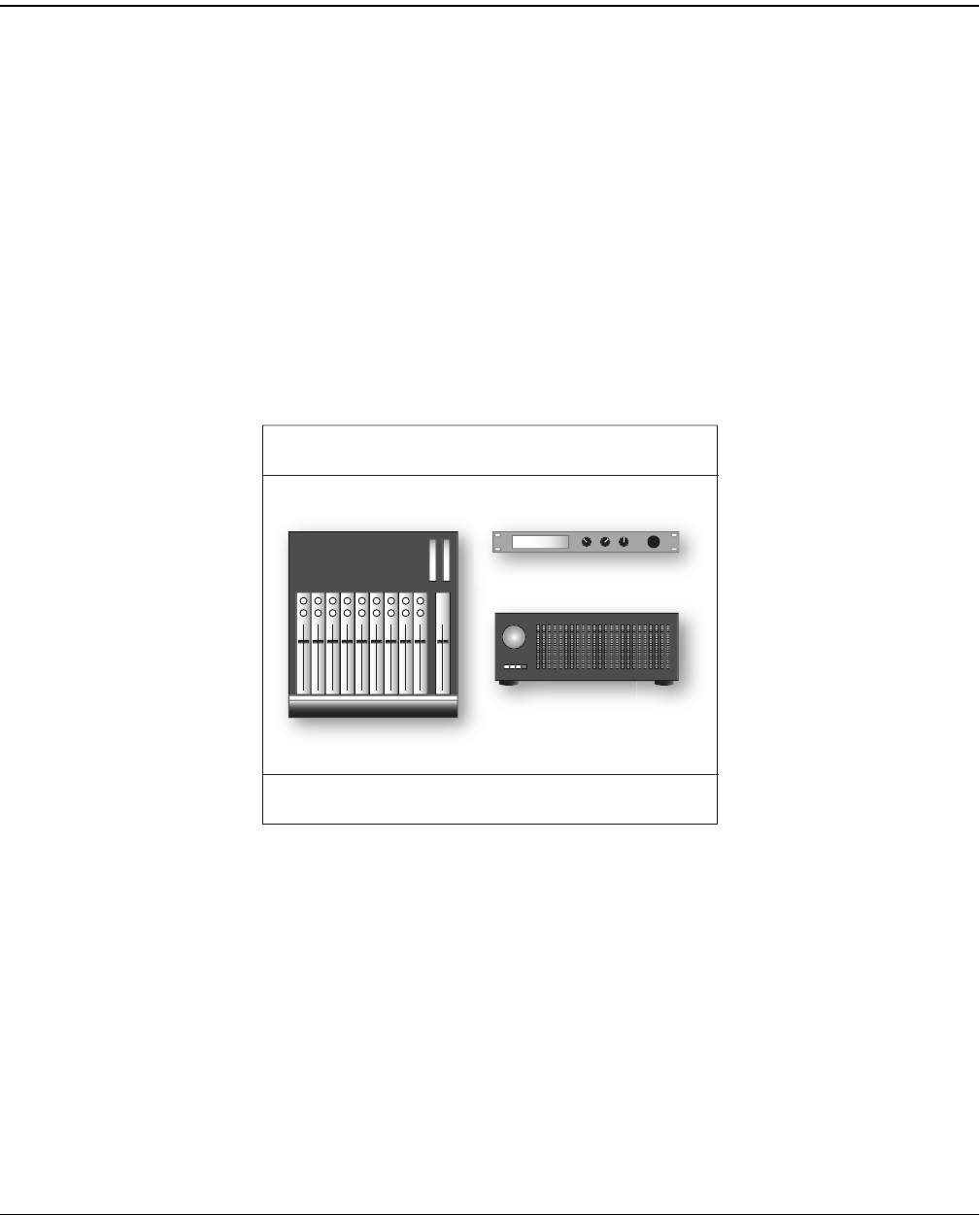
Roland VS-2480 Owner’s Manual www.rolandus.com 51
3—Introduction to the VS-2480
To master the VS-2480, it’s important to understand the components that make up this
self-contained 24-track recording studio. That’s what we’ll do here. More specific
descriptions of how to use these components can be found in later chapters as noted.
While advanced V-2480 users may already understand much of what’s discussed here,
everyone should make sure to read “Projects” on Page 56. This section introduces the
project, the basic structure in which all VS-2480 work takes place.
What’s Inside the VS-2480?
Every recording studio has the same mission: the capturing of sound and the
conversion of that sound into a form—an audio CD, a film or video soundtrack, a
broadcast—that people can hear. If you were to go into any conventional multitrack
recording studio, you’d therefore see the same sort of tools. All of these tools can also
be found inside your VS-2480. Here’s what’s hidden inside its case:
Input Jacks and Connectors
Obviously, you’ve got to have a way to get sound into the VS-2480.
Analog and digital sounds travel through the cables that bring them to the VS-2480 as
electrical signals, called “input signals.” The VS-2480 provides jacks that recognize
analog audio signals from microphones and from electric or electronic instruments. It
also has digital connectors that accept digital audio signals from devices such as
synthesizers or effect boxes with digital outputs, and from digital audio tape (DAT)
decks and other kinds of digital recorders, including computer-based audio recorders.
We’ll discuss the VS-2480’s analog input jacks and digital connectors in detail in
Chapter 9, starting on Page 129.
Input jacks and connectors
Output jacks and connectors
Mixing console Internal effects
Hard disk recorder
VS2480OMUS.book 51 ページ 2006年2月7日 火曜日 午後4時16分


















